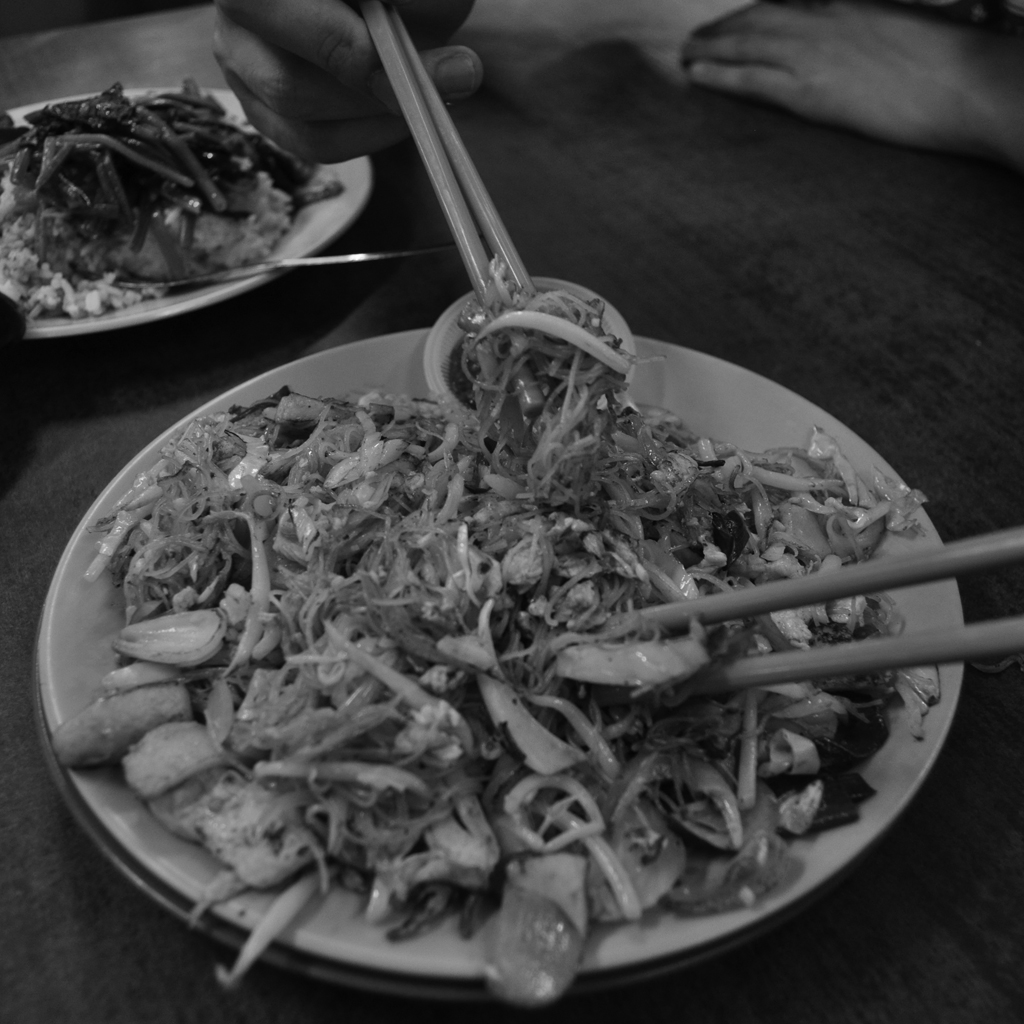Leaving home after a long day at work. Though it is late at night, there are still many businesses open and people out and about. You see some plumes of steam rise from a stall nearby. Approaching you are greeted with a rejuvenating and savory wall of vapor from the many different boiled, broiled and steamed dishes available. But it is a deep vat of deep reddish-orange that catches your eye. There’s Tteokbokki! A Korean spicy rice cake dish.
Tteokbokki Taste
You order a small batch of this dish. You are handed a tooth pick with which to eat each of the thick, plump morsels awash in the red, steaming sauce. The smell is both sweet and spicy, and the soft, sometimes wiggly cylindrical morsel you just tried is a rice cake. You are first taken by the softness of the rice cake, biting into it, it’s almost like a marshmallow it is so soft and chewy! Then, you are quickly greeted by the sweet and incredibly spicy sauce! Some layers of fish cake also can be found and you soon find your cup completely empty. You have even taken a big gulp of the sauce!
Tteokbokki Loved by Students
Experiences like these are very common in Korea from students leaving school and en route to the many different academies and after-school activities they take part in as well as adults, either out late drinking and feeling in the mood for a sweet yet bitingly spicy treat or en route to home from a busy day at work. This is the wonderful ways people enjoy tteokbokki (떡볶이). Also Anglicized as “Tteok-bokki” or “ddukbokki”, this dish is a real treat and has a ton of different variations and served at a few different types of venues. But be aware! No matter what your tteokbokki preferences are, the sauce will be both hot temperature wise as well as in the spice department!
Tteokbokki History
One may be a bit surprised to learn that tteokbokki, a humble food sold at street stalls and a mainstay for hungry children after school, was actually a dish prepared for the royal court. Though this version involved many other ingredients like sirloin and high quality soy sauce. Over time, the other ingredients like beef and pine nuts would vanish from the basic preparation of tteokbokki but soy sauce and tteok (rice cake, in this case cylindrical cuts of it).
The first modern version of tteokbokki is believed to have been invented from a lucky accident. Ma Bok Lim, after having accidentally dropped tteok in a vat of hot sauce found that the combination was actually rather tasty. And so she decided to sell the first modern and commercial ttoekbokki in Seoul’s Sindang, which is still a place to grab choice tteokbokki to this day. The dish was popular because it was cheap, quick and easy to make. This was all during the 1950’s in the wake of the Korean War and the painful post-war eras for Korea, when the economic situation for the country at large was in a desperate place. Remarkably, after the economic recovery and subsequent higher level of affluence many Koreans enjoy today has not stopped this dish from maintaining its popularity.
Today it can mainly be found at bunsik restaurants, which serve other snack type dishes like kimbap and at pojangmacha, which are street stalls, some of which operate out of the back of trucks.
Tteokbokki Recipe: Some like it hot…
The basic recipe for tteokbokki includes the white, cylindrical rice cakes stir fried with gochujang, which is a thick, spicy red pepper paste sauce. Some other ingredients one may find in their tteokbokki may include eomuk, with are thin layers of fish cake, hard boiled eggs and scallions. The resulting dish has an aroma that is sweet and savory and a flavor that is salty, sweet, spicy and savory, too. The texture of the dish is chewy and at times thick, depending on how thick the tteok is! Other styles include…
- Ra-bokki: This variation on tteokbokki includes throwing ramyeon (hence the “ra” part) noodles into the broth. This gives the dish some additional noodles, and sometimes a slice of cheese is even added on top and allowed to melt along with the natural heat of the dish.
- Jeukseok-tteok-bokki: This “hot pot” style of tteokbokki is a more substantial meal and may see certain veggies, Korean dumplings and ramyeon noodles added in, too.
- Cheese tteok-bokki: This type can be one of two things, either tteokbokki with cheese added into the dish itself, or tteokbokki made with tteok that has cheese inside of it!
- Gireum tteok-bokki: This is tteokbokki stir fried in “gireum” which is cooking oil. Famously found at Seoul’s Tongin Market. Because this variation is stir fried and uses a little bit less sauce, the resulting dish is “drier” in comparison, but certainly still delectable!
Tteokbokki anytime!
If you ever find yourself in Korea, whether it is mid afternoon or 3 in the morning, keep your eyes peeled for this stunning dish. From the royal court, to a snack on the go, tteokbokki is there whenever and wherever you may be hungry! Just remember, that sauce is tasty, but very spicy, so be prepared, too!
Sources
- hui, Jing, et al. “Tteokbokki (Spicy Rice Cakes).” My Korean Kitchen, 23 May 2019, mykoreankitchen.com/tteokbokki-spicy-rice-cakes/.
- “Tteok-Bokki.” Wikipedia, Wikimedia Foundation, 30 Nov. 2019, en.wikipedia.org/wiki/Tteok-bokki.



No Comments